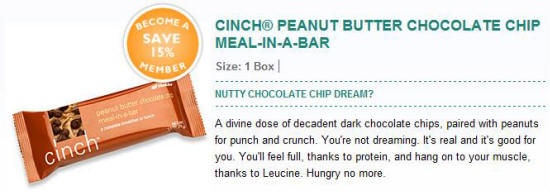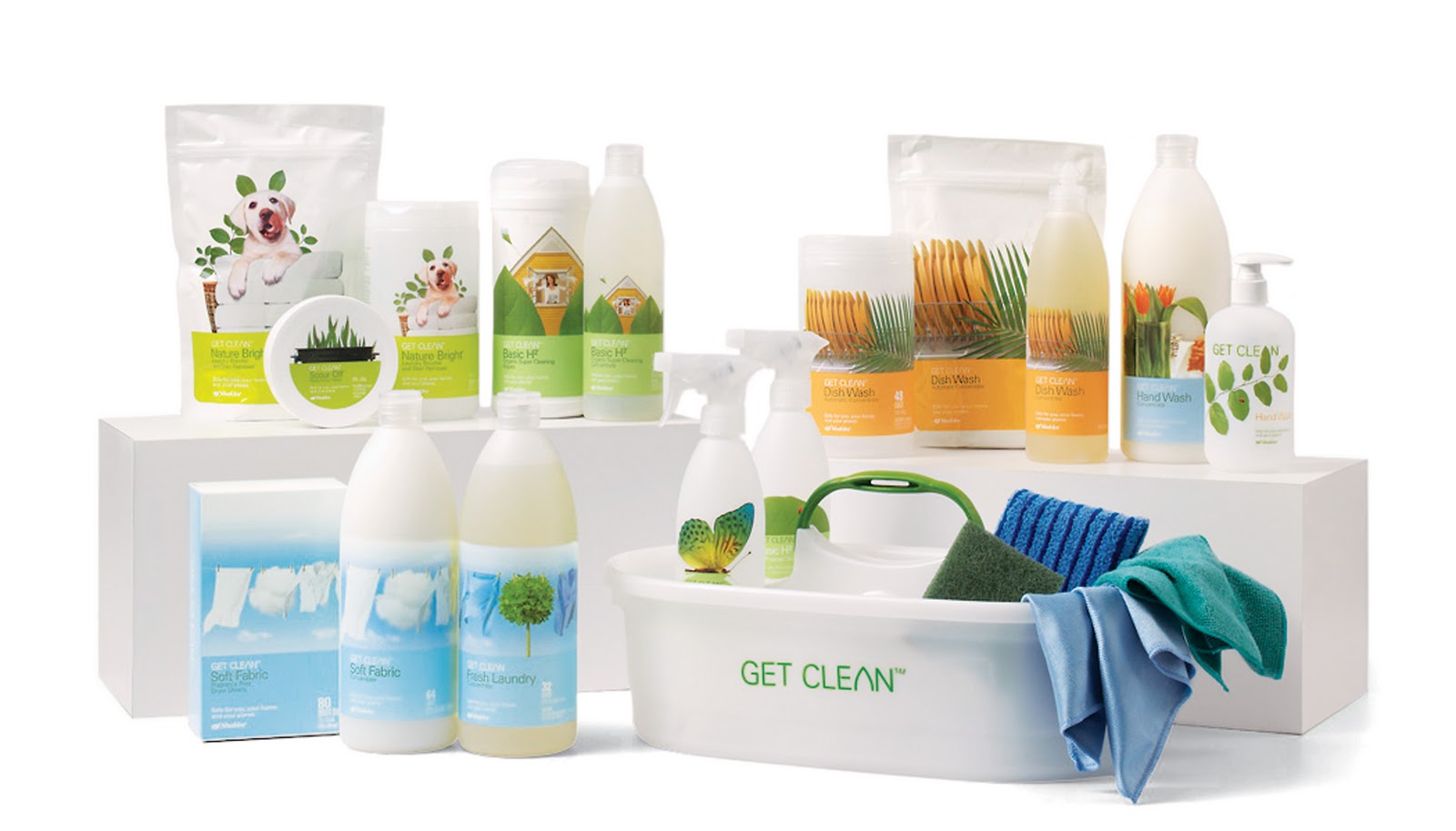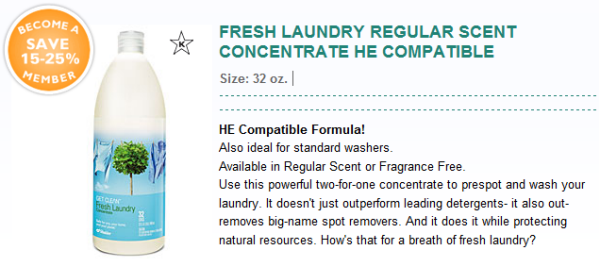Soy is unhealthy, even dangerous! It’s all over the internet so it must be true, right? Well NO, the internet can be a great thing, but it can also spread false or misleading information quicker than that dude who just broke the sound barrier crashing down to earth from 25 miles in space! It’s truly unbelievable the number of people I come across who are so anti-soy. And based on what? If you look carefully, most anti-soy stories can be traced back to ONE single group in the US called the Weston A Price Foundation (WAPF). My personal issue with soy is that it’s 90% GMO not the misleading information of the WAPF. [Read more…]
The Benefits of MORE than Just a Multivitamin Each Day
 Eating a balanced diet rich in whole grains, fruits, and vegetables; getting plenty of sleep and regular exercise; and managing stress are all important lifestyle strategies to help support and maintain optimal health. But did you know there’s more you can do? Today, many leading experts in the fields of medicine, biochemistry, and nutrition believe wise nutrition supplementation can make a big difference in your health.
Eating a balanced diet rich in whole grains, fruits, and vegetables; getting plenty of sleep and regular exercise; and managing stress are all important lifestyle strategies to help support and maintain optimal health. But did you know there’s more you can do? Today, many leading experts in the fields of medicine, biochemistry, and nutrition believe wise nutrition supplementation can make a big difference in your health.
Following a fairly recent National Institutes of Health conference, Dr. Walter Willett and Dr. Meir Stampfer, two prominent physician researchers from Harvard Medical School, joined forces with Dr. Bruce Ames, professor of biochemistry and molecular biology at the University of California, Berkeley, and Dr. Joyce McCann, staff scientist at the Children’s Hospital & Research Center Oakland, to issue the following statement in regard to their recommendations for supplementing with a multivitamin.
“Of course everyone would agree that all persons should be encouraged to eat a good diet, but we are far from achieving this goal, especially among the poor. In most cases, a simple way to improve micronutrient status is to take a multivitamin/mineral.”1
In fact, taking MORE than just a multivitamin/multimineral may be in order. In a first-of-its-kind Landmark Study published in Nutrition Journal, long-term multisupplement users were more likely to have optimal concentrations of several key biomarkers of health and a lower risk of developing a number of health conditions compared to nonsupplement users or those who took only a single multivitamin daily2. Here are just a few of the positive health benefits seen among long-term multisupplement users:
- 33% lower triglyceride levels
- 59% lower C-reactive protein levels
- 11% lower ratio of total cholesterol to LDL cholesterol
- 36% lower homocysteine levels
- 39% less likely to have elevated blood pressure
- 73% less likely to have diabetes
Find out more about the multivitamins we recommend plus others:
2Block, G.M., Jensen, CD., Norkus, EB., et al. Usage patterns, health and nutritional status of long-term multiple dietary supplement users: a cross-sectional study. Nutrition J, 2007;(6) 30:1-11.

Photo updated 10-11-13: Image credit: ia64 / 123RF Stock Photo
Overfed and Undernourished – WHAT?
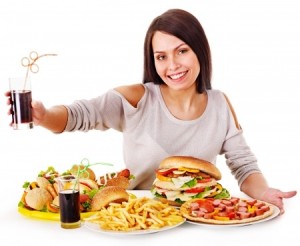
Image credit: poznyakov / 123RF Stock Photo
How is it that Americans today consume an average of 610 calories a day more than they did 20 years ago—yet are still falling short in getting enough of the most critical nutrients needed for a long and healthy life? Blame it on our superbusy, fast food-packed lifestyles that drive us to make compromises of convenience, which are taking a toll on our nutritional status.
- More than 80% of Americans have inadequate vitamin D blood levels, and for those over 50, almost 100% do not get the recommended amount of vitamin D from their diet. Vitamin D is needed for calcium absorption, and a results in osteomalacia (a softening of bones in adults).
- About half of adults don’t get enough vitamin C, which plays a role in immune function. One of the first signs of poor vitamin C status is low energy.
- 86% of men and 93% of women don’t get enough vitamin E. This vitamin also is key to supporting a healthy immune system.
- 90% of teenage girls, more than 67% of women ages 19–50, and more than 90% of women over 50 fall short in reaching the recommended dietary intake for calcium from diet alone. Calcium is a mineral essential for strong and healthy bones.
- Iron deficiency is believed to affect up to 16% of premenopausal women in the U.S., primarily because suboptimal iron consumption and menstruation lead to negative iron balance.
- Two-thirds of adults don’t get enough magnesium, an essential mineral needed for more than 300 biochemical reactions in the body. Magnesium helps maintain normal muscle and nerve function, keeps normal heart rhythm steady, supports a healthy immune system, and keeps bones strong.
- American adults consume only about 15 grams of dietary fiber daily, while dietary guidelines recommend 25 to 35 grams per day. Fiber is important for healthy digestive function and for reducing the risk of heart disease.

Image credit: poznyakov / 123RF Stock Photo, photo updated 10-11-13
Ezekiel Chicken Nuggets
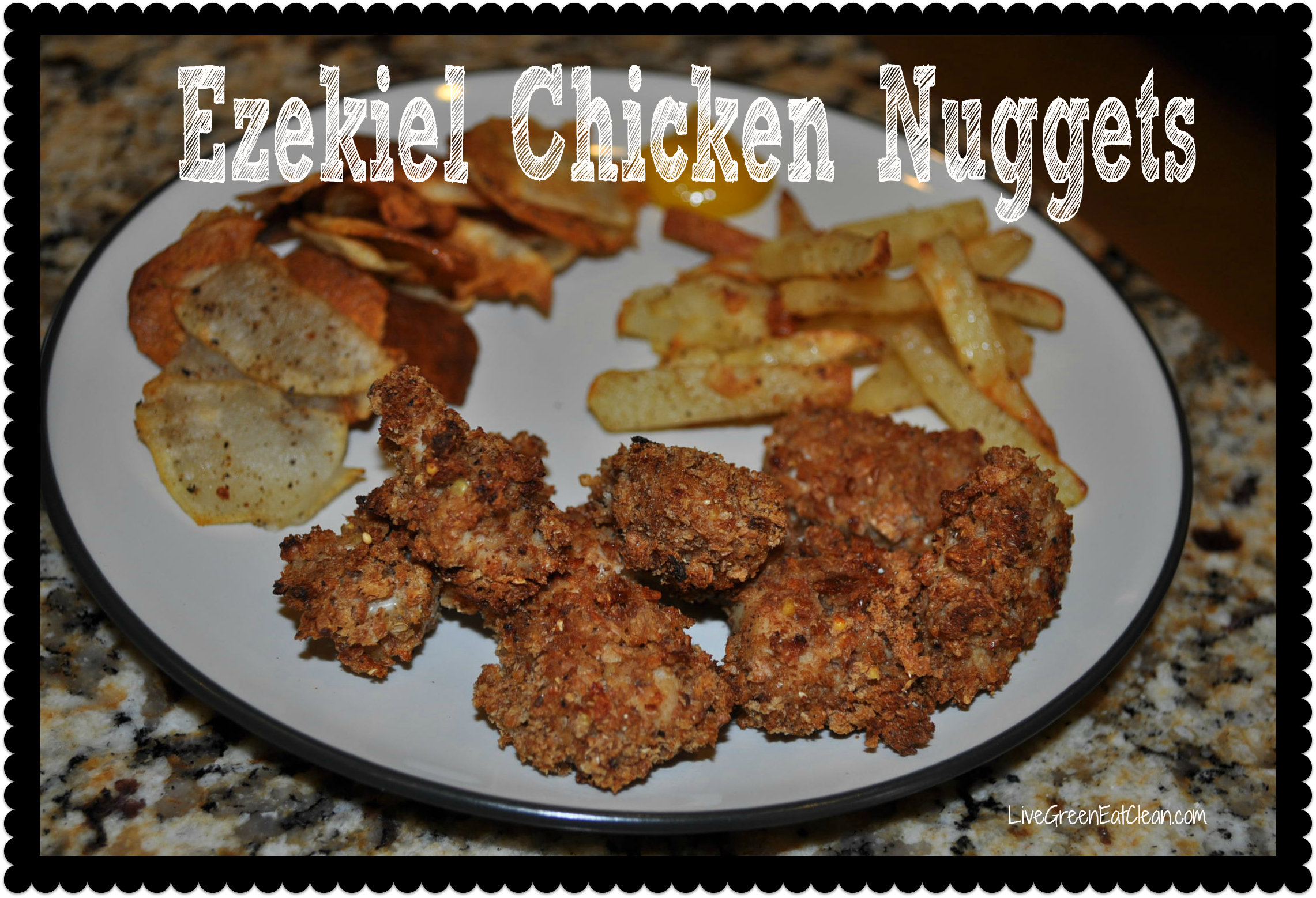
All white meat chicken coated in Ezekiel breadcrumbs then baked. This is an easy kid friendly recipe your whole family will love. There’s nothing more kid friendly than chicken nuggets, right? Even really picky eaters usually eat chicken nuggets. You can serve with BBQ sauce or Coleman’s mustard {our favorite} or any other dipping favs. Take left overs to work in your lunch the next day in either a salad or just as is.
These are breaded with home made Ezekiel Bread Crumbs. Please don’t use stale bread to make your bread crumbs – you’ll just end up with stale tasting bread crumbs. You can toast your bread in the oven on 350 for about 15 minutes to get super crunch, then use a mini food processor to make your crumbs.

Once you have the bread crumbs place in a separate bowl and combine with seasonings. We used Sea Salt, Pepper, Paprika and Garlic Powder {to taste}. You can even add some Parmesan cheese if you want {we don’t eat much cheese in our house so we don’t add this}. Then in another bowl beat one large organic egg. Cut up organic chicken into small bite size chunks. Then start your dipping. First in the egg, then in the bread crumbs and put on an olive oil sprayed baking sheet.
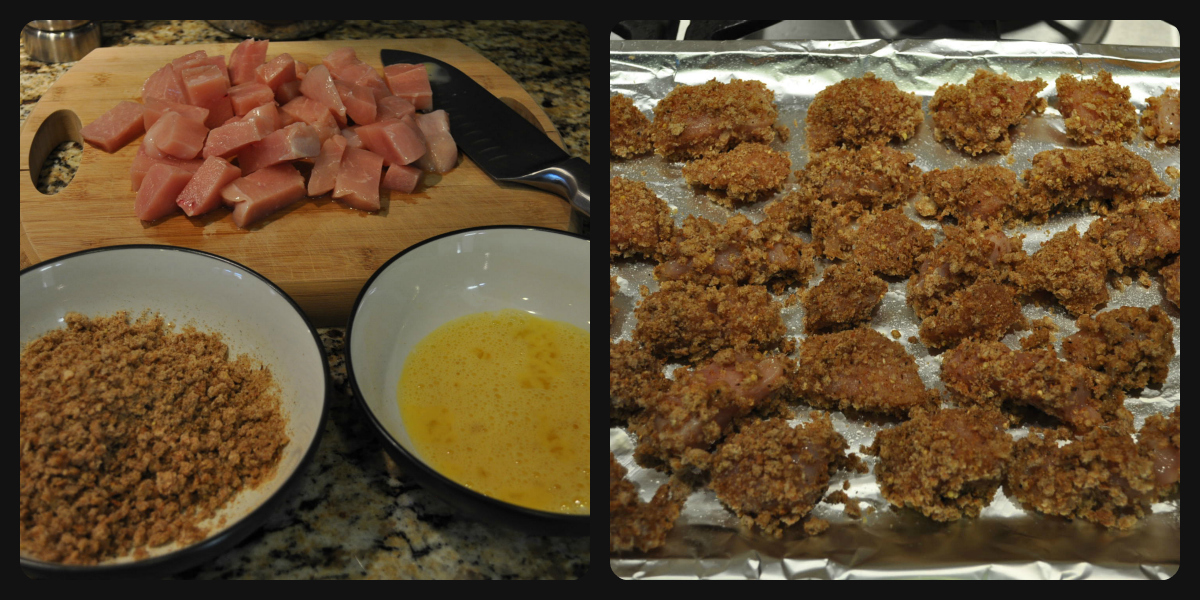
Cook in a 425° preheated oven for 10 minutes, then turn over and cook for another 5-7 minute or until done {we always cut one in half first to see if it’s done}. We served the nuggets with organic homemade potato chips and fries. However, they need a little bit of work, so we’ll be posting instructions on those another day!
The below recipe makes 4 servings so adjust as needed.
- Serves: 4
- Calories: 206
- Fat: 3
- Carbohydrates: 13
- Protein: 31

- 3 slices Food for Life - Ezekiel Sprouted Grain Bread - Low Sodium
- 16 oz {about 2 breasts} Organic Boneless & Skinless Chicken Breast
- 1 organic egg
- 3 tsp Sea Salt
- 3 tbsp Ground Black Pepper
- 3 tsp Paprika
- 3 tsp Garlic Powder
- Step 1: Preheat oven to 350
- Step 2: Toast 3 slices of Ezekiel bread in oven for 15 minutes or until crunchy, but not burned. Cool, then crush into bread crumbs and put in a bowl to the side. Add seasonings to breadcrumb mixture. Then turn over up to 425
- Step 3: Beat 1 egg in a separate bowl
- Step 4: Cut chicken into small bite size chunks
- Step 5: Put a few chunks of chicken at a time into the egg mixture to coat, then add to the breadcrumb mixture, then onto the oiled baking sheet.
- Step 5: Bake 8 - 10 minutes. Turn over then cook another 4 - 5 minutes or until cooked though.
Enjoy the Nuggets!

Shaklee-Powered Athletes Bring Home the Gold
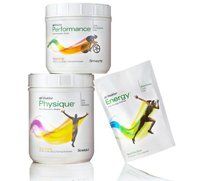 For over 20 years Shaklee nutrition has fueled an impressive array of elite athletes and we are very proud of the 17 Shaklee Pure Performance athletes who competed in London. And, we’re excited to announce our Pure Performance athletes who earned medals this year at the 2012 Games.
For over 20 years Shaklee nutrition has fueled an impressive array of elite athletes and we are very proud of the 17 Shaklee Pure Performance athletes who competed in London. And, we’re excited to announce our Pure Performance athletes who earned medals this year at the 2012 Games.
The first U.S. medal awarded in London went to Shaklee Pure Performance athlete Brady Ellison for his silver-medal performance in archery.
Already gold medalists from 2008, Shaklee Pure Performance athletes Caryn Davies, Caroline Lind, Eleanor Logan and Mary Whipple of the Women’s Eight Rowing Team, won gold again this year in London.
Four-time competitor in the Games and Shaklee Pure Performance athlete Troy Dumais earned his first medal at the Games in London, a bronze in synchronized diving.
And, Shaklee Pure Performance athlete and three-time competitor in the Games, Matt Emmons, took home bronze in shooting.
Shaklee congratulates all our athletes and we look forward to supporting their future successes.
Learn more about our Pure Performance Team and be sure to share the excitement with everyone you know.
FACT: 100+ olympic medals, 54 of them gold medals, have been won by Shaklee powered worldclass athletes.

5 Reasons to Pack Your Kids Lunches

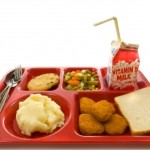 Most schools are trying hard to upgrade their lunch programs and offer the best food they can. But not every school cafeteria provides appealing, healthy lunch choices. Educate yourself when it comes to what your kids cafeteria has to offer. For example, did you know chicken nuggets have more fat and calories than a plain burger?
Most schools are trying hard to upgrade their lunch programs and offer the best food they can. But not every school cafeteria provides appealing, healthy lunch choices. Educate yourself when it comes to what your kids cafeteria has to offer. For example, did you know chicken nuggets have more fat and calories than a plain burger?
Even if your school provides healthy options, it can be too easy to give in to temptation and pick a less healthy choice when you’re feeling really hungry. How do you take control? Send your kiddo to school with a healthy and fun packed lunch!
Here are the top 5 reasons to pack your kids lunch — and snacks:
1. Control. Do you want your kiddo to wait in the lunch line only to find when they get to the front they don’t like what they’re serving? So they reach for pizza again. A healthy packed lunch lets your kiddo avoid the lunch line (and any temptations). Bringing their own lunch also lets you control exactly what goes into the food they eat.
2. Variety. It doesn’t hurt to cave in and enjoy the occasional serving of pizza and hot dogs. But if your kids are eating these foods all the time, their bodies probably feel ready for a change. A packed lunch at least a couple of times a week means they can enjoy some favorites that they might not find at school — like a piping hot thermos of your chicken soup; hummus and pita bread; or some crisp, farm-stand apples.
3. Energy. If your kids have a big game or activity after school, plan a lunch and snacks that combine lean proteins with carbohydrates to give them lasting energy and keep them going through the late afternoon. Some ideas: your own “trail” mix of dried fruit and nuts or sunflower seeds, whole-grain pretzels and low-fat cheese, or a bagful of baby carrots and yogurt dip.
4. Cold hard cash. Pack healthy and fun snacks and lunches so your kids don’t wan that cafeteria food or if they are old enough, they won’t be tempted to step off campus for a fast-food lunch, or hit the vending machine or corner store for chocolate and a soda! Put the money you save on such snacks aside for college or a special gift for your kids!
5. That warm and fuzzy feeling. Remember when your mom or dad used to pack your lunch? Pack well these are the memories you will be making with your kids. Add retro lunch featuring healthy versions of your old faves — such as PB&J on whole-wheat bread.
Whether you pack your kids lunches or they eat in the cafeteria, what’s important is that you make healthy choices. If you’re concerned that the cafeteria doesn’t offer enough healthy choices, get involved in trying to make changes. Ask a teacher or someone in food service for advice on how to get started.
There are some great websites out there with fun lunch box ideas like ThisLunchRox. Get some fun cookie and mini cookie cutters to make amazing creations. Here are some ideas:
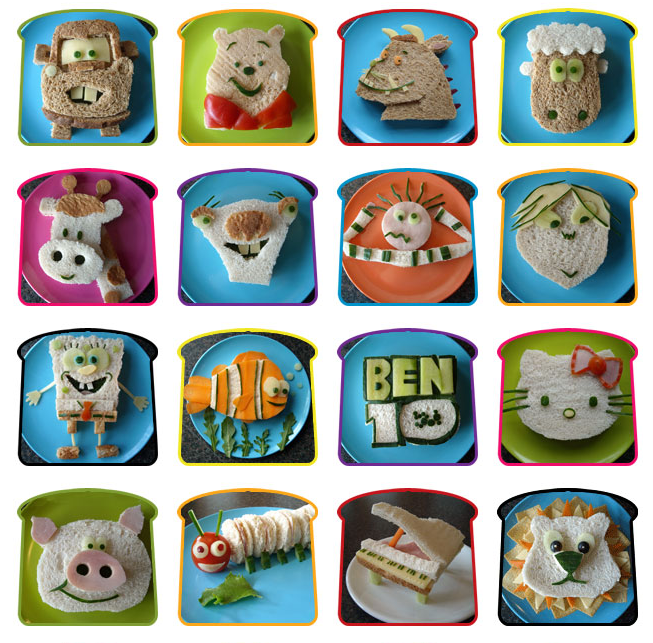
From http://www.howtolearn.com/HTL/media/school_lunch.bmp
You can also find some fun eco friendly lunch boxes here.
The Shaklee Snack Bars are a staple in our house and my son loves them! Easy and convenient for on the go options.
More info on these snack bars.
Photos updated 10-11-13:
Image credit: dominikhladik / 123RF Stock Photo
Image credit: flippo / 123RF Stock Photo
Is Your Home Toxic?
We believe home should be the safest place in the whole world.
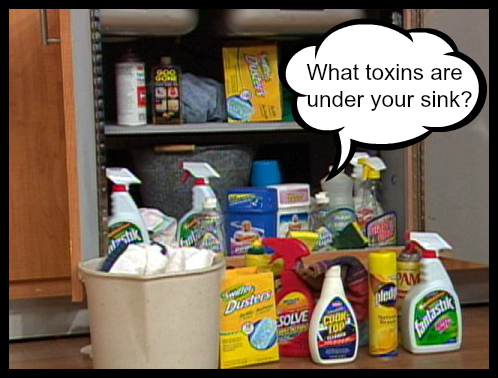 Go to your cupboard right now. Pick a cleaner, any cleaner. Does it contain sodium hydroxide, phenol, ammonia or formaldehyde? These–and more–may be toxic. Toxic as in dangerous, as in hurtful, as in not very clean at all. Home is no place for stuff like that. So start by getting rid of those troublemakers. Responsibly, of course – you’ll likely have to dispose of them with your Hazardouse Waste Facility – that in itself goes to show how toxic they are!
Go to your cupboard right now. Pick a cleaner, any cleaner. Does it contain sodium hydroxide, phenol, ammonia or formaldehyde? These–and more–may be toxic. Toxic as in dangerous, as in hurtful, as in not very clean at all. Home is no place for stuff like that. So start by getting rid of those troublemakers. Responsibly, of course – you’ll likely have to dispose of them with your Hazardouse Waste Facility – that in itself goes to show how toxic they are!
We are a toxin-free home and our cleaners of choice are Shaklee Get Clean. The research on quality and effectiveness is unsurpassed. I’ve used these products for over 30 years, starting as a child, in our kitchen, bathrooms, laundry room, and on our floors. Every job in your house can be covered with these non-toxic cleaners. And the best part? You save so much money! For the cost of pennies per bottle, you can clean everything! So when you welcome Get Clean into your home, none of the hazardous chemicals come with it. So you can be sure you’re letting in products that care as much about your family’s safety as you do.

Click for more information on how you can exchange $3400 in Toxic Cleaners for $99!

Black Bean Salad
This colorful, high fiber, high protein salad makes a great side dish with fish, chicken or BBQ ribs. It also makes for a good appetizer served with chips or a left over lunch inside fresh tortillas. This salad is low in saturated fat and filled with antioxidants.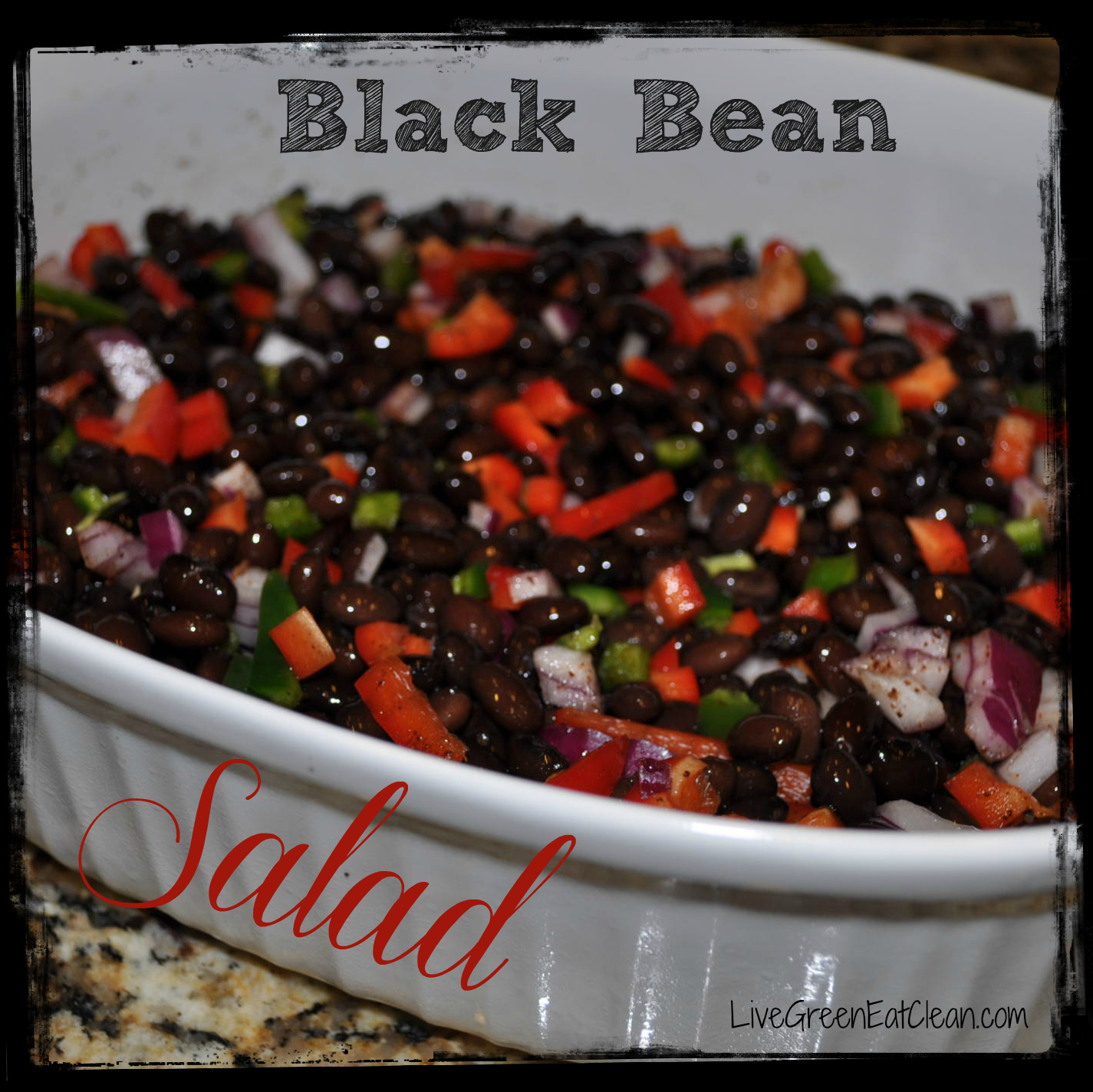 [Read more…]
[Read more…]
Beef Kebabs with Greek Salad
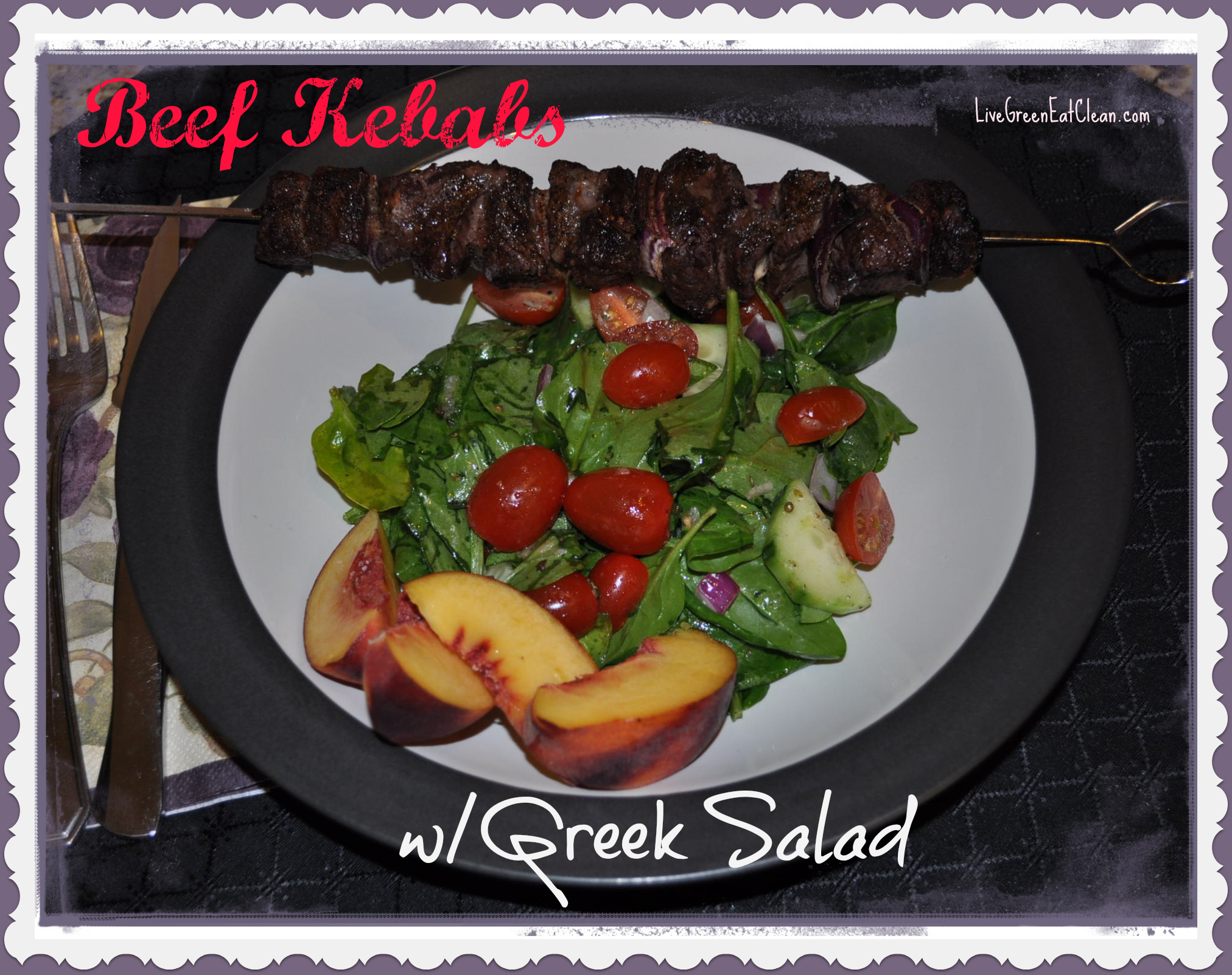
This is by far one of our favorite recipes and meals! We used the sirloin we bought recently at the local farmers market – super tasty. We also added 1/2 a peach to add some additional fruit and flavor. All I can say is yummers…and I am so satisfied.
My husband would say that the only thing to make it better would be some olives and feta cheese. Feel free to modify to your taste buds, but not too much!
This recipe was adapted from Rachael Ray Magazine, June 2012 issue.

- ½ lb beef sirloin, cubed
- 2-3 oz cherry tomatoes
- ½ english cucumber
- ¼ small onion, chopped
- 3 cups baby spinach
- ¼ cup olive oil
- 1 tbs red wine vinegar
- 2 garlic cloves grated
- 1 tsp dried oregano
- Salt & pepper to taste
- In a small bowl whisk oil, vinegar, garlic and oregano.
- Pre-heat grill to about medium heat. Skewer sirloin chunks and season with salt & pepper to taste. Grill kebabs until browned on all sides, about 5 minutes or medium rare.
- In a medium bowl, add spinach, tomatoes, cucumber, onion and toss with dressing.
- Split salad on two plates and server with a kebab.

Considering a High Efficiency Washer & Dryer?
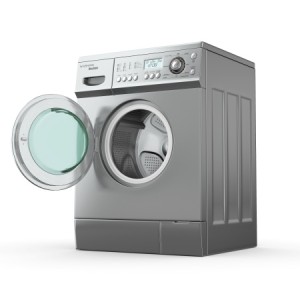 Our dryer is on the fritz and we are in the middle of deciding if we should get the new High Effeciency (HE) models out there. They are a lot more expense and are a little bit different to use, so there will definitely be a learning curve. We’d love to hear your comments, recommendations and suggestions about HE washers and dryers.
Our dryer is on the fritz and we are in the middle of deciding if we should get the new High Effeciency (HE) models out there. They are a lot more expense and are a little bit different to use, so there will definitely be a learning curve. We’d love to hear your comments, recommendations and suggestions about HE washers and dryers.
Maybe you are considering buying a new washer and/or dryer in the near future too? If you are, there are many decisions to be made prior to the purchase. There are three different types of machines currently in the market: regular top-loaders with center-post agitators, top-loaders without center post agitators, and front-loaders.
HE washers have been available for a decade and have become increasingly popular in the consumer market in the last few years. HE washers are available in both front loading and top loading units. There are many more choices in the front loading HE models than top loading HE washers. HE washers use significantly less water and energy than traditional units. The savings will depend on the age and model of your current washing machine. However, an HE washer can use from 20% to 66% less water and save 20% to 50% in energy use. As a consumer, these reductions translate to long term cost savings. There are also significant long-term environmental benefits.
HE washers use low-water wash and rinse cycles. They utilize a tumbling system rather than an agitator. In some models, the water level is so low it’s hard to see a pool of water. Even with the reduced water levels, you can wash the same size laundry loads. Once the cycle is completed, clothes may feel dryer because more water is removed. With less water in the HE washers, your HE dryers use less energy AND time to dry the clothes. So in the end you save time, energy and money.
Detergent Choice
There are detergents specifically formulated for HE washers and should be the only products used. These HE detergents are formulated to be low-sudsing and quick-dispersing to achieve the best cleaning performance. Traditional detergents can cause excess suds and will not perform well in a low water level system.
To identify the HE laundry detergents, look for a special HE symbol on the detergent box or bottle. Always read the label and use the manufacturer’s recommended amount of detergent for your wash load size and amount of soil.

Photo updated 10-11-13: Image credit: maxxyustas / 123RF Stock Photo
- « Previous Page
- 1
- …
- 8
- 9
- 10
- 11
- 12
- Next Page »


